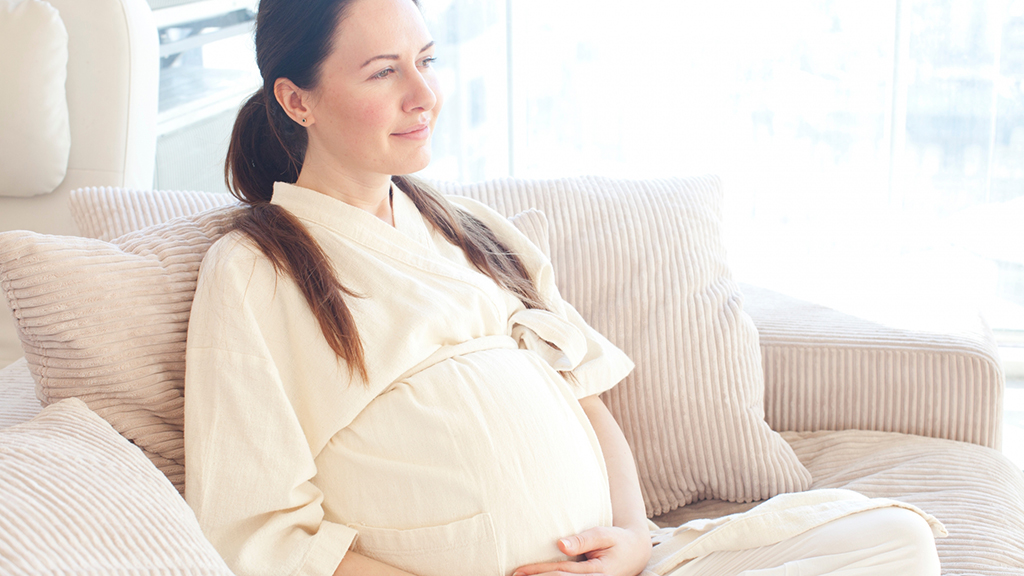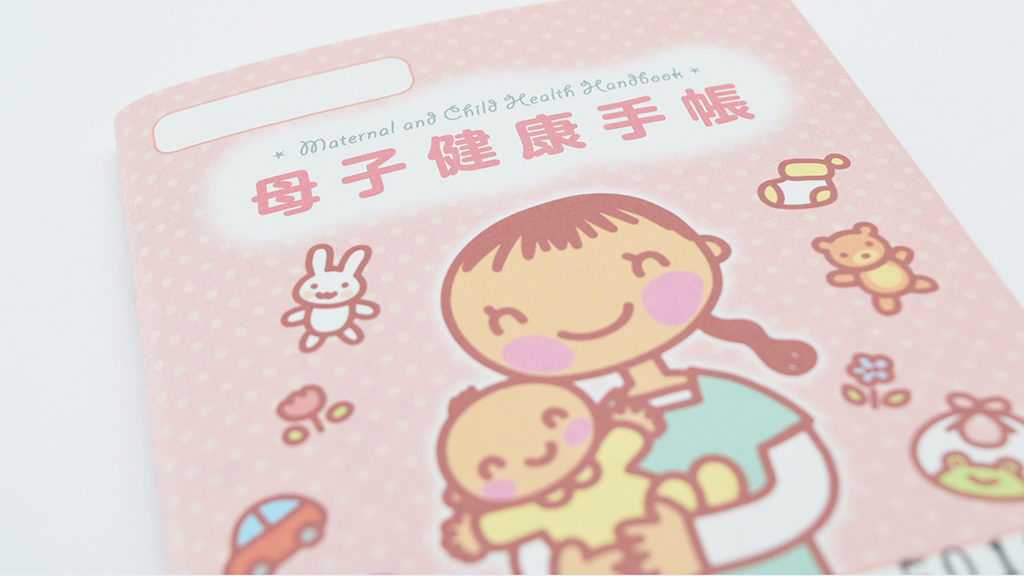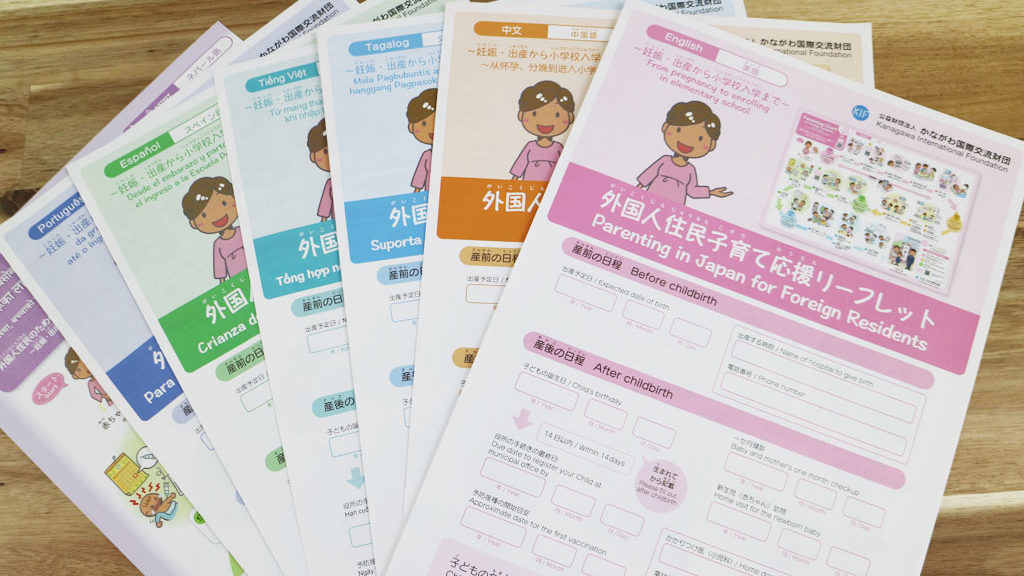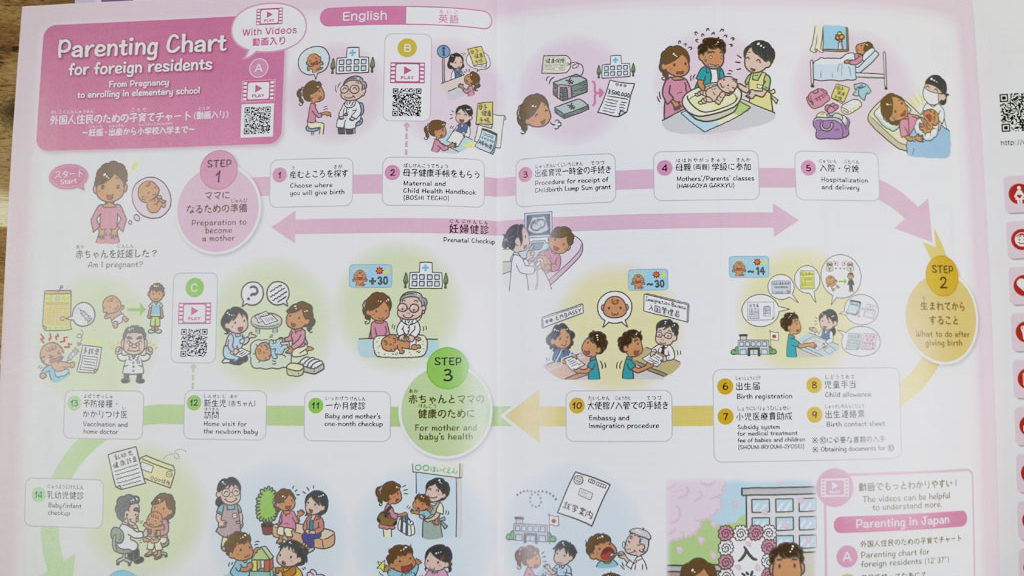What should a foreign resident woman do when she gets pregnant?

This post is also available in 日本語
There are a lot of anxiety even for a Japanese woman who becomes pregnant for the first time and will give birth in Japan. A foreign resident who lives in Japan must have even more uneasiness.
With this in mind, we visited Kanagawa International Foundation, a public interest organization, who has been vigorously supporting foreigners rearing children. We would like to share with you the procedural flow from pregnancy to delivery in accordance with what we gathered from the Foundation.
Contents
1. Visiting a hospital:
When you notice an early symptom of pregnancy, like a delaying period, you want to see a gynecologist at a hospital. There are some pregnancy test kits easily available but the ‘positive’ result may not always accurate. It is advisable to receive a pregnancy confirmation from a hospital.
2. Notifying pregnancy to and receiving a maternal health handbook from a local public office:

In Japan, when your pregnancy is confirmed by a hospital, you have to visit and report your pregnancy to a municipal office in your living area, and a maternal Health handbook will be issued. The timing of these procedure will be advised by the hospital.
The maternal health handbook is originated in Japan and is widely used by over 30 countries now:
The maternal health handbook keeps track of the health condition of the mother and the child following the pregnancy and the birth. As there are maternal health handbook described both in Japanese together with English, Hangul, Chinese, Thai, Tagalog, Portuguese, Indonesian, Spanish, or Vietnamese, please check this when you report your pregnancy.
However, they are not available free of charge at all municipalities. It is recommended that you carry the maternal health handbook always so that a hospital can treat you accordingly in case of an emergency.
3. Selecting a hospital for the childbirth:
This may surprise foreigners but in Japan expecting mothers choose a hospital to deliver a baby soon after being pregnant. When you have one doctor from the beginning of conception, it is easier to observe the progress. Also, there might be a case where no hospital is available to make a reservation at the last minute. It is advisable to reserve a hospital at around 10 weeks of pregnancy.
4. Looking into the lump-sum allowance for childbirth and its procedure:
As the expenses during pregnancy and of delivery are not covered by a health insurance and are out of your pocket. However, there exists a system called ‘a lump-sum allowance for childbirth’ which usually pays 420,000 yen for every child to help pay the childbirth expenses.
The general rule to receive this allowance is that you have to be a member of either the national health insurance or a corporate health insurance, and have given birth after pregnancy of longer than 4 months (85 days).
There are several ways to receive the limp-sum allowance and each method has different procedures to submit an application. Especially for foreign people, the length of your of stay in Japan may become a factor. Therefore, you have to check this beforehand and don’t want to forget to apply for.
When the expecting mother herself works, your pay may be reduced or suspended during the maternity leave. In this case, when she has been a member of a corporate health insurance, you may qualify to receive ‘a childbirth allowance’ as an on-leave compensation. Please check with the company as to the amount, conditions, required paper, and the procedure before you go into the maternity leave.
Ticket (coupon) for prenatal checkup, an useful privilege:
It’s not a small financial burden to pay for the prenatal checkup for a pregnant woman and the baby to-be. In most cases, they take the checkups 14 times and there is a supporting system to pay for all or a portion of the expense by a municipality.
This 14 times amazes foreign people because the checkup frequency in other countries is much less. The checkup is not only for finding any illness but the health condition of the pregnant woman and the fetal growth are examined as well. A health guidance will accompany and a medical examination will be performed if deemed necessary. At the same time, you can receive advise regarding the delivery and child-rearing, too.
When you don’t take frequent checkups, the number of hospitals who accept you at the time of delivery may decrease because of the unforeseeable danger associated with the child-birth.
Please make certain to get prenatal checkups using the tickets.
5. Attending Mothers’ and Parents’ classes:
When you attend these classes, you learn many things including the ways to control your health during the pregnancy, the physical exercise and breathing method, and how to take care of a baby. There are classes sponsored by private corporations besides those by municipalities and hospitals. You’ll meet other expecting mothers with whom you can exchange information.
Not only for expecting mothers, but the number of parents’ classes are increasing where both mother to-be and father to-be attend together. Men share the difficulty pregnant women have to go through by putting on pregnant women’s jacket and also learn how to bath a baby.
There are classes only for father to-be. He can start with a class which he feels comfortable to join.
6. Being hospitalized and giving birth (delivery):
You want to be fully prepared to be admitted to a hospital when you go into the 8th month of pregnancy.
There are four items you should bring with you, the maternal health handbook, a health insurance card, a hospital patient card and your signature stamp. Any other things you have to bring with you differ from hospital to hospital. Please read carefully a pamphlet handed by the hospital describing what you are required to bring with you and the expenses for consumable items beforehand.
This will be useful not only to foreign resident pregnant persons but also to Japanese who are assisting them.

The Kanagawa International Foundation, who gave us these explanations, offers child support program for foreigners living in Kanagawa Prefecture.
A ‘Child Care Chart’ is available surprisingly in seven languages, Chinese, Tagalog, Spanish, Portuguese, Vietnamese, English and Nepal.
Please visit: http://www.kifjp.org/child/chart

If you live in Kanagawa, you can receive consultation from the following when you have any question concerning pregnancy, delivery and child rearing.
Kanagawa Multi-language Navigation
Tel: 045-316-2770
http://www.kifjp.org/kmlc
Note: If you not a resident of Kanagawa Prefecture, please refer to your local municipal office.
Kanagawa International Foundation
- If You Wonder What Should Give a Gift, This Is the Best Choice! Cool Packaged Handkerchiefs!
- Apply on UV Cream Without Getting Your Hands Dirty! Why not Have This Handy Puff?
- So Popular Character “Chiikawa” Cheers You Up! Improve Your Arched Back!
- If You Want to Improve Your Sleep Quality, You Should Change Your Pajamas! 3 Recommended Pajamas
- Conveniently 2-Way! This Product Is Useful in Both Summer and Winter.









